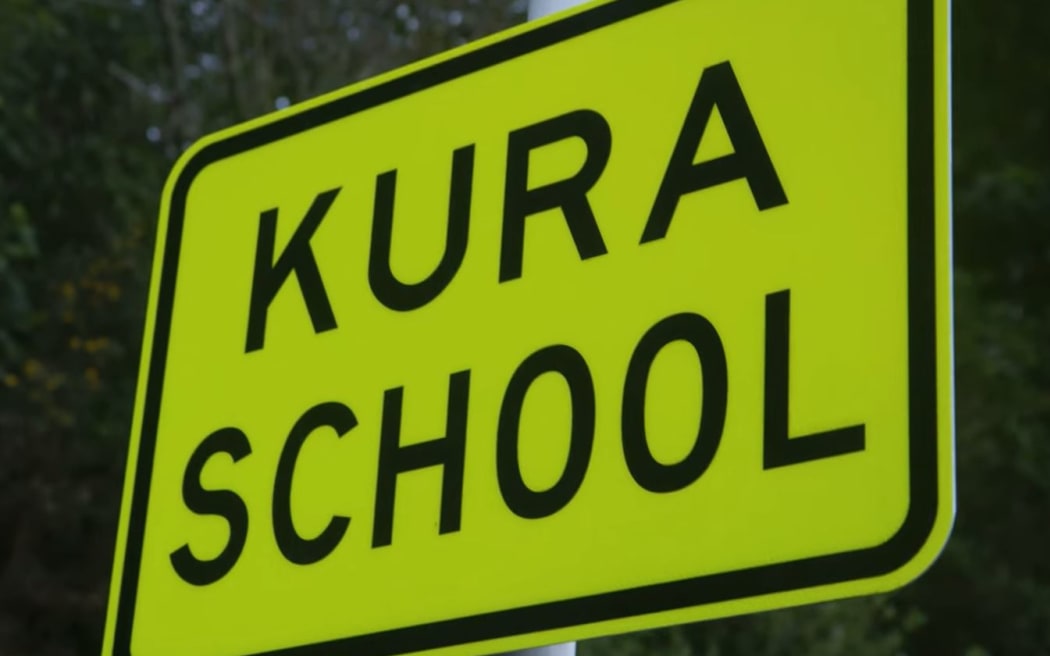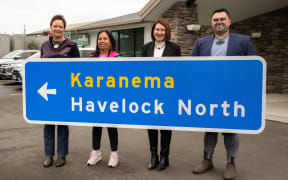
A bilingual road sign unveiled by Waka Kotahi in Rotorua in 2022. Photo: Screenshot / Waka Kotahi
Analysis - Bilingual road signs send a signal - that the country values te reo Māori. But going bilingual was confusing and National would not support it, National's Simeon Brown told voters in blue-ribbon Tauranga recently.
Accusations of racism and a walkback by the party leaders followed. But what evidence is the choice to go bilingual based on?
Helpfully, finding the answer to that is easy. The answer Waka Kotahi is relying on is in a 39-page "research note" into international experiences and outcomes.
However, a quick scan reveals the answer itself is not as straightforward as some of the commentary on the debate has suggested - that it is a straw man.
The table here, taken from the research, does not paint a clear picture that bilingual signs are safe, and even indicates sometimes they might erode safety, if only a little.

Photo: Waka Kotahi / NZTA
The five-point summary of driver performance faced with bilingual versus regular signs reads:
- "Comprehension time ... longer"
- "Visual stimuli ... greater"
- Following distances ... smaller "indicating distraction and real-world decrements in safety"
- "Driving speed ... greater"
Not unexpectedly, long signs with lots of lines, and very big signs, are a no-no, the 39-page report shows. (Complex signs whether mono-or-bi have been associated with "less safe and driving behaviour that is more aggressive, such as faster acceleration manoeuvres" as drivers get "overwhelmed").
Interestingly, the comprehension time is greatest for those most fluent in both languages, as they tend to read both and compare them, in the fraction of a second they get as they drive past.
None of the above sounds great, but, crucially, number five states: Death and serious injury rates ..."No evidence that DSIs become more frequent". The table's negatives notwithstanding, the report concludes: "Few studies have found evidence of major safety impacts associated with bilingual signage".
The real-world research appears a little thin - emphasis is put on the experience of Wales and Scotland - and at times the findings contradict each other. But overall there was "a negligible negative effect on safety", with one enormous caveat: Poor sign design could lead to "more substantial" negative outcomes.
A four-page memo boils that down further, baldly stating that one benefit "likely" from bilingual signs is "safety enhancement". "Safety issues can be successfully managed with good sign design practices" and bilingual signs "can be safe", is where Waka Kotahi has ended up.
Brevity always risks leaving stuff out.
The four-pager plays up the potential for bilingual warning signs to actually reduce the road toll in regions with a lot of Māori, while the longer report states: "In most cases, it is extremely rare to see bilingual safety and regulatory signage, with notable exceptions being in Finland and Wales".
"The tendency has been to focus on advisory signage more than other categories; it is particularly rare in regulatory signage."
An advisory sign is one pointing to, say, a town or feature; a regulatory sign tells you what to do - e.g. 'Stop' - and a warning sign is along the lines of 'Slippery when wet'. The crux comes in confronting the fact that not going bilingual with road signs carries its own real jeopardy.
"Where cultural safety is under threat (such as when an indigenous language is under threat of extinction), the aggregate public good may demand that relatively small decrements in public physical safety should be ranked below cultural needs," the research says. It then gives 10 pages over to designing bilingual signs "that maximise the good while minimising any safety decrements".
So road safety is not a straw man, but it is not nothing either.
In government-speak, clear bilingual signs can "mitigate the potential negative effects of sign complexity on public safety while providing for cultural aspirations/protection".







